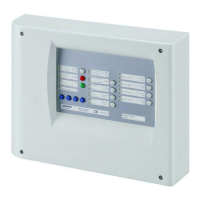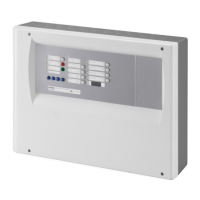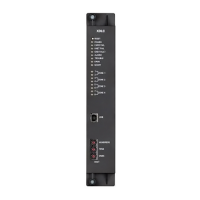6.1.4 Driver outputs
The signals of driver outputs can be used for relays, for example:
–
Shutting down the ventilation system
–
Closing the doors to the extinguishing area
–
Closing the fire damper
–
Report status information
CL1-1
CL1-2
CL2-1
CL3-1
CL4-1
CL2-2
CL3-2
CL4-2
CL16-1
CL16-2
Programmable
Programmable
Fig. 32 Connection of the driver output to relay
In programming step 16, you can select the following functions:
Driver output 2: Option 1 = Active on state "Activated"/"Released"
Option 2 = Active on state "Fire alarm"
Option 3 = Active on state "Activated"
Option 4 = Active on state "Normal operation", and inactive on
state "Fault"/"Fire alarm"/"Activated"/"Released"
Option 5 = Active on state "Fault control line 5"
Option 6 = Active on state "Normal operation" (µP working)
Option 7 = Active on state "Mech. blocked"
Driver output 8: Option 10 = Active on state "Emergency hold/abort"
Option 11 = Active on state "Autom. & Man." (normal operation)
Option 12 = Active on state "Fault power supply"
Option 13 = Active on state "Loss of extinguishing agent"
Option 14 = Active on state "Detector test"
Option 15 = Active on state "Alarm" zone 3 until "Reset"
Option 16 = Active on state "Disabled"
Option 17 = Active when system is in any condition other than
"Normal operation"
In the basic configuration, driver outputs are set in programming step 16 as follow:
–
Driver output 2 is set to be active on state "Activated"/"Released" (= option 1)
and driver output 8 to be active in state "Emergency hold/abort" (= option 10).
–
Driver outputs 2, 8 and 1 can be disabled with key "Fire control disabled" (=
option 9, 18, 20).
Details on programming, see chapter 11.6.16.

